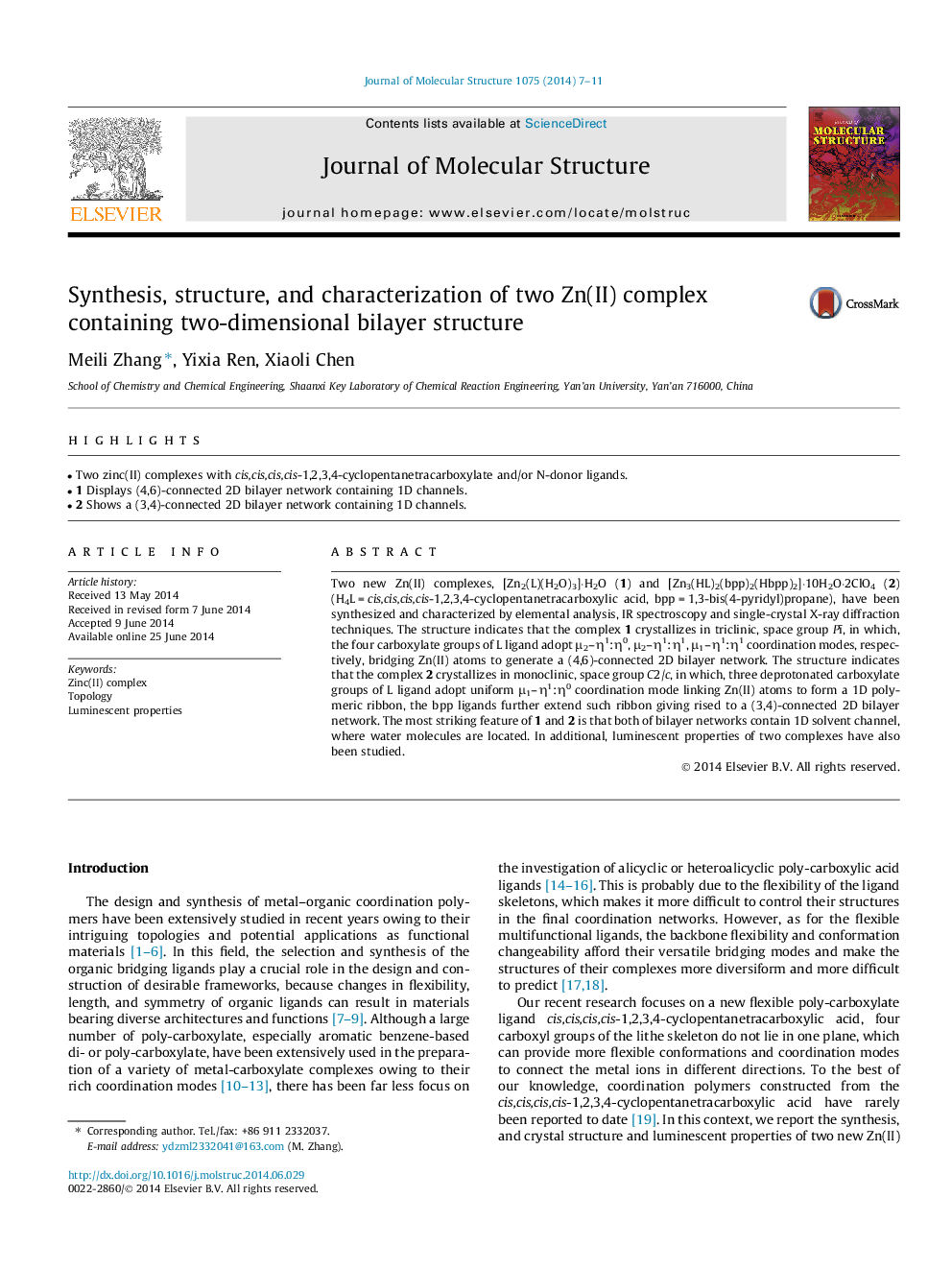| Article ID | Journal | Published Year | Pages | File Type |
|---|---|---|---|---|
| 1402260 | Journal of Molecular Structure | 2014 | 5 Pages |
•Two zinc(II) complexes with cis,cis,cis,cis-1,2,3,4-cyclopentanetracarboxylate and/or N-donor ligands.•1 Displays (4,6)-connected 2D bilayer network containing 1D channels.•2 Shows a (3,4)-connected 2D bilayer network containing 1D channels.
Two new Zn(II) complexes, [Zn2(L)(H2O)3]⋅H2O (1) and [Zn3(HL)2(bpp)2(Hbpp)2]⋅10H2O⋅2ClO4 (2) (H4L = cis,cis,cis,cis-1,2,3,4-cyclopentanetracarboxylic acid, bpp = 1,3-bis(4-pyridyl)propane), have been synthesized and characterized by elemental analysis, IR spectroscopy and single-crystal X-ray diffraction techniques. The structure indicates that the complex 1 crystallizes in triclinic, space group Pī, in which, the four carboxylate groups of L ligand adopt μ2–η1:η0, μ2–η1:η1, μ1–η1:η1 coordination modes, respectively, bridging Zn(II) atoms to generate a (4,6)-connected 2D bilayer network. The structure indicates that the complex 2 crystallizes in monoclinic, space group C2/c, in which, three deprotonated carboxylate groups of L ligand adopt uniform μ1–η1:η0 coordination mode linking Zn(II) atoms to form a 1D polymeric ribbon, the bpp ligands further extend such ribbon giving rised to a (3,4)-connected 2D bilayer network. The most striking feature of 1 and 2 is that both of bilayer networks contain 1D solvent channel, where water molecules are located. In additional, luminescent properties of two complexes have also been studied.
